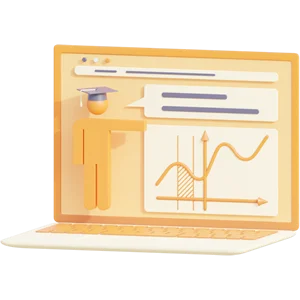PATHOLOGY FINAL EXAM STUDY GUIDE
For each disorder/condition listed below, please review:
Categories or staging of disorder (when applicable)
Main major (broad) topic (if not testing on disorder or disease)
Signs and symptoms (clinical manifestations)
Genetic considerations (when applicable)
Risk factors: modifiable and non-modifiable
Pathophysiologic changes
Complications
Laboratory/Diagnostic Testing (when applicable)
Cellular Changes – atrophy, hypertrophy, hyperplasia, metaplasia, dysplasia o Atrophy: decrease in cell size ex: disuse,
denervation, loss of endocrine stimulation, inadequate nutrition, ischemia, or decreased blood flow
• Hypertrophy: increase in cell size, ex: exercise (normal), due to disease (abnormal)
• Hyperplasia: increase in the number of cells, ex: breast and uterine enlargement in pregnancy (physiologic), regen of the
liver after hepatectomy (compensatory), excess hormone stimulation, BPH, warts (nonphysiologic),
• Metaplasia: reversible change in which one adult cell type is replaced by another adult cell type, ex: barrets esophagus
in GERD o Dysplasia: deranged cell growth that results in cells that vary in size, shape, and organization, ex: dysplastic
changes found during pap smear for cervical cancer
Causes, Mechanisms, and Consequences of the Stress Response, Cellular Injury & Cell Death or Causes of Cell Injury
Injury from Physical Agents: common causes of injuries due to environmental exposure, occupational and transportation
accidents, and physical violence and assault.
Mechanical Forces: injury or trauma due to mechanical forces as the result of body impact with another object •
Extremes of Temps: extremes of heat and cold cause damage to the cell, its organelles, and its enzyme systems.
Electrical Injuries: can affect the body through extensive tissue injury and disruption of neural and cardiac impulses
▪ Radiation Injury
Ionizing Radiation: impacts cells by causing ionization of molecules and atoms in the cell, by releasing free radicals that destroy
cells, and by directly hitting target molecules in the cell.
Ultraviolet Radiation: cause sunburn and increase the risk of skin cancers. Skin damage produced is thought to be caused by
reactive oxygen species and by damage to melanin-producing processes in the skin, also damages DNA resulting in the formation
of pyrimidine dimers.
Nonionizing Radiation: includes infrared light, ultrasound, microwave, and laser energy. Exerts its effects by causing vibration
and rotation of atoms and molecules which is eventually converted into thermal energy.
▪ Chemical Injury
Drugs: alcohol, prescription drugs, OTCs, and street drugs that are capable of directly or indirectly
3
Lead Toxicity: small amounts accumulate to reach toxic levels, and can come from flaking paint, lead-contaminated dust, and
soil, root veggies, lead water pipes or soldered joints, pottery glazes, newsprint, and toys made in foreign countries. (anemia is
a sign of lead toxicity)
Mercury Toxicity: vapor, inorganic divalent, methyl, and ethyl. Dental fillings (vapor), long-lived fish, tuna, and swordfish
(methyl)
▪ Injury from biological agents: able to replicate and can continue to produce their injurious effects. Viruses, bacteria.
▪ Injury from nutritional imbalances: excesses and deficiencies. Obesity and diets high in sat fats predispose persons to
atherosclerosis. Starvation, etc. can result in iron deficiency anemia, scurvy, beriberi, pellagra, and protein and calorie
deficiencies.
Mechanisms of Cell Injury
▪ Free radical formation: highly reactive chemical species with an unpaired electron in the outer orbit of the
molecule. The unpaired electron causes free radicals to be unstable and highly reactive so that they react
nonspecifically with molecules in the vicinity. ROS are oxygen-containing molecules that include free radicals
such as superoxide and hydroxyl radicals and nonradicals such as hydrogen peroxide.
▪ Hypoxia and ATP depletion: deprives the cell of oxygen and interrupts oxidative metabolism and the
generation of ATP. During Hypoxic conditions, hypoxia-inducible factors (HIFs) cause the expression of genes
that stimulate red blood cell formation, produce ATP in the absence of oxygen, and increase angiogenesis
(formation of new blood vessels). One important effect of reduced ATP is acute cell swelling caused by failure
of the energy-dependent sodium/potassium pump which extrudes sodium from and returns potassium to the
cell. With the impaired function of the pump, intracellular potassium decrease, and sodium and water
accumulate in the cell. The movement of water and ions into the cell is associated with multiple changes
including widening of the ER, membrane permeability, and decreased mitochondrial function.
▪ Disruption of intracellular calcium homeostasis: ischemia and certain toxins lead to an increase in cytosolic
calcium because of increased reflux across the cell membrane and the release of calcium from intracellular
stores. The increased calcium level may inappropriately activate several enzymes with potentially damaging
effects. Injured cells accumulate calcium
Reversible Cell Injury and Cell Death
▪ Reversible Cell Injury: Impairs cell function but does not result in cell death. Two patterns of reversible cell
injury occur Cellular swelling: impairment of the energy-dependent Na+
/K+ ATPase membrane pump, usually
as the result of hypoxic cell injury. Fatty change: linked to intracellular accumulation of fat
▪ Programmed Cell Death: Number of cells in tissues regulated by cell proliferation balanced with cell death. This
process eliminates cells that: Are worn out, Have been produced in excess, Have developed improperly, and
Have genetic damage.
Cell death occurs via→ Necrosis, Apoptosis (programmed cell death)
• Necrosis: Refers to cell death in an organ or tissue that is still part of a living person. Often interferes
with cell replacement and tissue regeneration. Gangrene occurs when a considerable mass of tissue
undergoes necrosis.
5
• Gangrene: The term gangrene is applied when a considerable mass of tissue undergoes necrosis o
Wet gangrene: Affected area: cold, swollen, pulseless, skin is moist, black, and under tension, blebs
form on the surface, liquefaction occurs, and a foul odor is caused by bacterial action. The spread of
tissue damage is rapid
Dry gangrene: Affected tissue: dry and shrinks, skin wrinkles, and its color changes to dark brown or black. The spread of dry
gangrene is slow
• Nomenclature of benign & metastatic tumors, mechanisms, and factors that contribute to cancer
development, tumor growth, and tumor metastasis o Benign: Well-differentiated cells that are
clustered together in a single mass, grow by expansion without invading surrounding tissues, and
encapsulate. No Mets.
o Malignant: Less well differentiated and can break loose, enter the circulatory or lymphatic
system and form secondary malignant tumors at other sites (yes Mets), grows by invasion,
and infiltrate surrounding tissues.
Preview document (3 van de 64 pagina's)
Voordelen van Knoowy
€ 24,34
 Niet tevreden? Geld terug
Niet tevreden? Geld terug
 Document direct te downloaden
Document direct te downloaden
 € 0,50 korting bij betalen met saldo
€ 0,50 korting bij betalen met saldo
-
 Ontvang gratis oefenvragen bij document
Ontvang gratis oefenvragen bij document

Specificaties
- School: Chamberlain College Of Nursing
- Opleiding: NURSING
Document
- Rubriek: Onderzoeken & Scripties
- Gemaakt op: 01-07-2024
- Type: .pdf
- Pagina's: 64
- Taal: Nederlands
Verkoper
Upcoming nursing graduate with excellent educational credentials and hands-on patient care experience. I possess fundamental knowledge of medical terminology, patient care values and health care policies
Verdienen aan je samenvattingen?
Vakken van NURSING - Chamberlain College Of Nursing
Meer NURSING ›ati ati comprehensive predictor ati pharmacology ati pharmacology proctored community health comprehensive fundamentals health care health care / nursing health care/ nursing healthcare hesi hesi rn exit leadership maternal newborn med surg medical surgical mental health nurs nursing nursing & health pediatrics pharmacology test bank tncc
Al meer dan 146.000 tevreden studenten
-
FCW
Handig te gebruiken bij het leren en er is veel aanbod op de website.
-
Jette
Prima website waar veel kennis te vinden is. De website heb ik gevonden door te zoeken naar samenvattingen.
-
Jen DM
Jullie website is top! Het heeft me al veel geholpen. Zeker omdat ik thuis studeer!
-
pensieve
Deze site is een uitkomst als samenvatten niet je sterkste punt is. Zeker als je moet leren voor toetsen kun je hier alle nodige info vinden. Win-win.
-
Pinjeu
Prima service, snelle afhandeling. Ik ga hiervan gebruik maken gedurende mijn hele studie.
-
joannavoortman
Een handige site voor het aankopen van samenvattingen voor examens.
-
martinraasveld3105
Prima database om studiemateriaal uit te halen, goed toegankelijk, eenvoudig zoeken.
-
omerkx
Samenvattingen zijn eenvoudig te bestellen en te downloaden via de website. Aan te raden.
 Actie: ontvang 10% korting bij aankoop van 3 of meer items!
Actie: ontvang 10% korting bij aankoop van 3 of meer items!
Actie: ontvang 10% korting bij aankoop van 3 of meer items!









